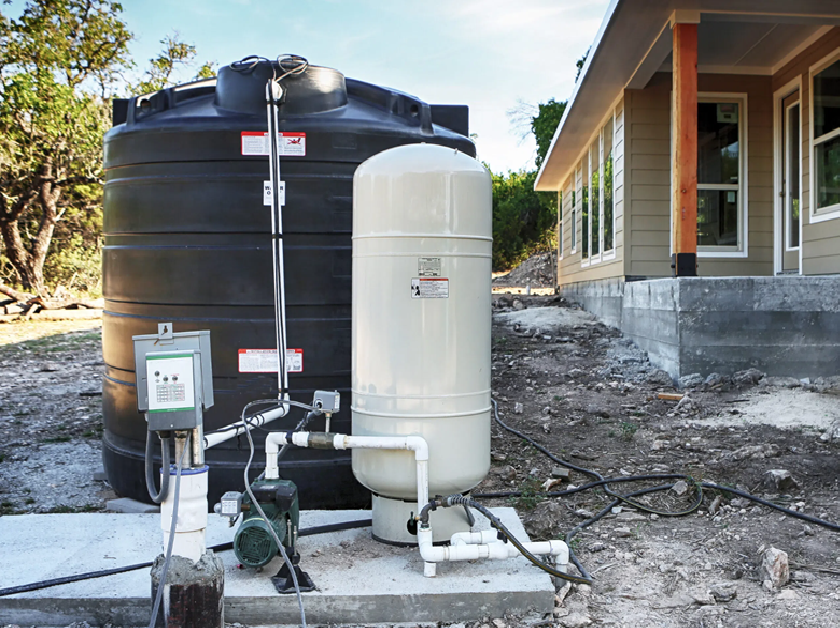Welcome to the fascinating world of holding tanks. Whether you’re an RV owner taking a cross-country trip, a pharmaceutical owner ensuring waste disposal, or a wastewater management professional, holding tanks are a crucial part of your operational backbone.
They might not be the most glamorous aspect of your setup, but they certainly deserve some much-needed spotlight. Why, you may ask? Because understanding how they work can not only help you make more informed decisions but also dispel some widely held misconceptions. Before you search “holding tank pumping near me“, let’s take a closer look, shall we?
The Basic Principles of Holding Tank Operation
At its core, a holding tank is a storage system designed to hold wastewater, whether from a residential, commercial, or industrial source, until it can be properly disposed of. They might seem simple at first glance, but there’s quite a bit of science that goes into their design and function.
For instance, a holding tank has two main components: the inlet pipe for waste to enter and the outlet pipe for waste to exit when it’s time for your regular pumping. The holding tank’s design ensures that solid waste settles at the bottom, while liquid waste floats to the top. This separation is what enables the tank to function without clogging and effectively manage waste.
Different Types of Holding Tanks
Not all holding tanks are created equal. They come in a variety of types, each designed for a specific purpose.
- Septic Tanks: These are used predominantly in rural areas without centralized sewer systems. Septic tanks allow for the biodegradation of waste, with the treated effluent then draining into the ground via a leach field.
- RV Holding Tanks: These tanks are specially designed for recreational vehicles, with separate tanks for ‘black’ (toilet waste) and ‘grey’ (sinks and showers) water.
- Chemical Tanks: These are used in various industries, including pharmaceuticals, to safely store and dispose of chemical waste.
- Portable Toilet Tanks: Ideal for construction sites, festivals, or other temporary setups, these tanks are designed for easy waste storage and removal.
- Marine Holding Tanks: Used on boats and ships, these tanks store waste until it can be safely disposed of on shore or treated and discharged at sea.
Each type of tank has its unique design and operational considerations, but they all share a common goal: effective waste management.
The Magic Behind How They Work
Proper Ventilation and Odor Control
A key component of any well-functioning holding tank is its ventilation system. Proper ventilation allows gases produced during the breakdown of waste to escape, preventing a buildup of pressure within the tank and controlling odors.
Biodegradation and Waste Breakdown
In septic holding tanks, the magic really happens when it comes to biodegradation. Bacteria within the tank break down organic matter, reducing the volume of solid waste and producing a liquid effluent that can be safely released into a leach field.
Tank Materials and Durability
Holding tanks can be made from a variety of materials, including plastic, concrete, and fiberglass. Each material offers differing levels of durability, cost-effectiveness, and resistance to rust and corrosion, all of which impact the tank’s lifespan and maintenance needs.
Addressing Misconceptions and Myths
Let’s unpack some common misconceptions about holding tanks:
- Myth 1: Holding Tanks Are Difficult to Maintain – Regular maintenance, including routine pumping can help ensure your tank operates efficiently and lasts for many years. With the right tools and knowledge, holding tank maintenance can be quite manageable.
- Myth 2: All Holding Tanks Are the Same – As we’ve discussed, holding tanks come in various types and designs, each tailored to a specific use.
- Myth 3: Holding Tanks Are Bad for the Environment – When properly maintained and serviced, holding tanks can be an environmentally responsible method of waste management. They prevent untreated waste from contaminating water sources and can even contribute to soil fertility in the case of septic systems with leach fields.
Conclusion
Holding tanks may not be the stars of the show, but they play a critical backstage role in a well-operating system. From homes to businesses to on-the-road adventures, they are silent heroes in efficient waste management. Understanding their operation helps us appreciate their design and make informed decisions about their maintenance and use.
Remember, proper upkeep, including regular pumping is extremely important for maximizing your holding tank’s lifespan and efficiency. Downing Septic and Grease Cleaning is here to help with all your septic and holding tank needs, from new installations to regular servicing.
To learn more and schedule a service, visit our contact page. And next time you search for “holding tank pumping near me”, think of us first.


